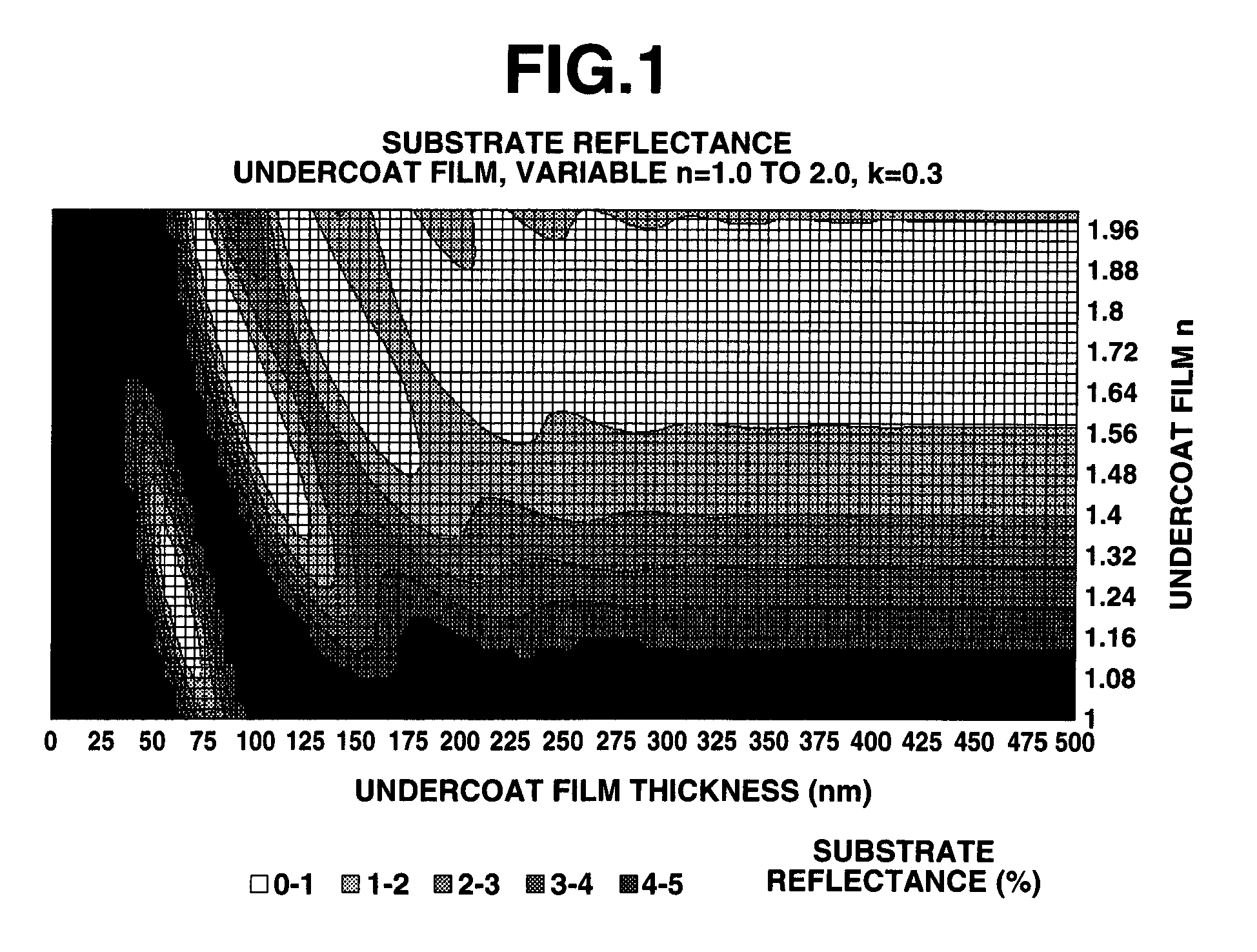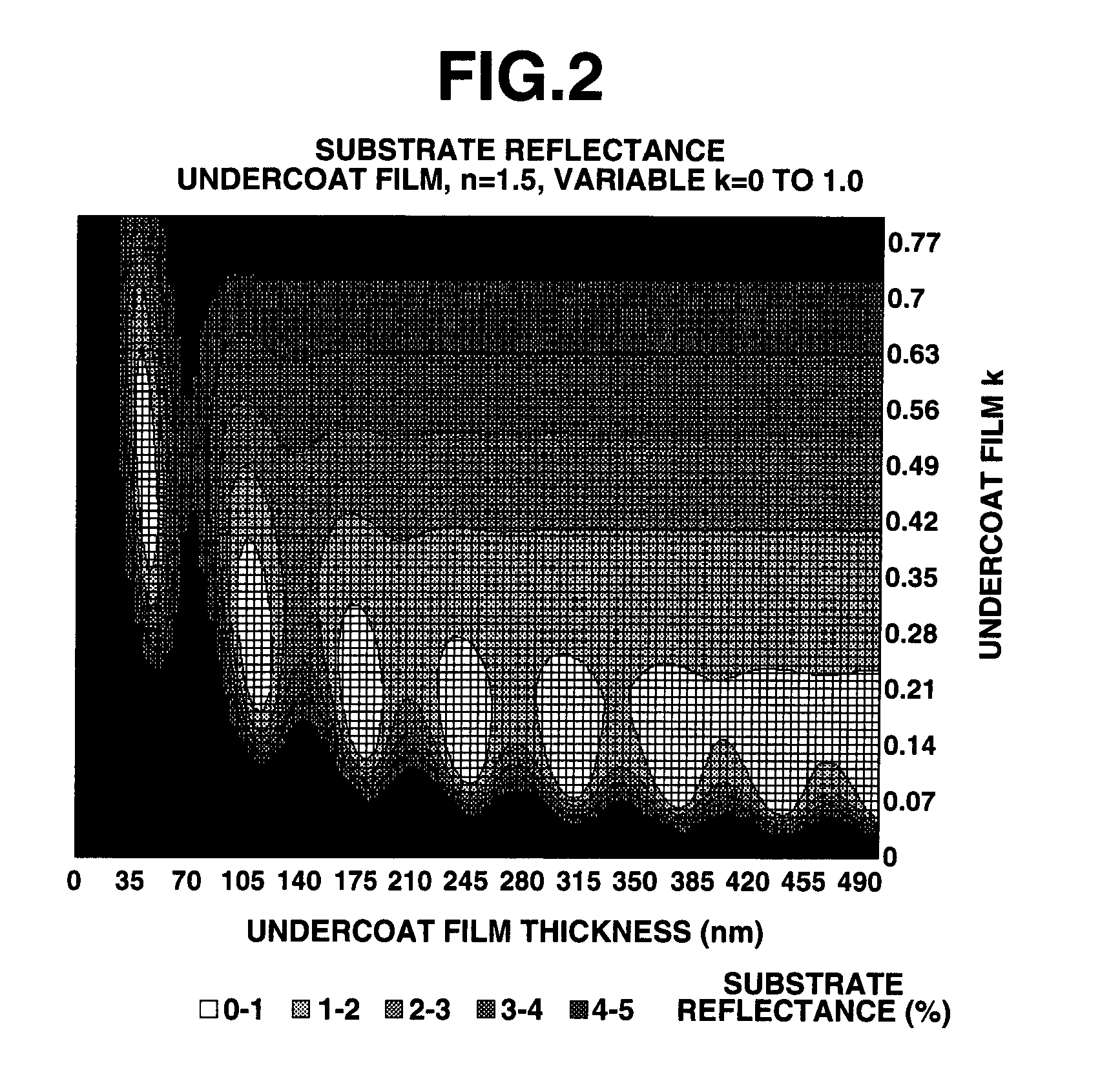Photoresist undercoat-forming material and patterning process
- Summary
- Abstract
- Description
- Claims
- Application Information
AI Technical Summary
Benefits of technology
Problems solved by technology
Method used
Image
Examples
synthesis example 1
[0128]A 300-ml flask was charged with 208 g of naphthalene-1-sulfonic acid and 30 g of 37% formalin. With stirring, reaction occurred at 100° C. for 4 hours. The reaction product was dissolved in 500 ml of methyl isobutyl ketone and thoroughly washed with water to remove the catalyst and metal impurities. The solvent was distilled off under a reduced pressure, and the system was further evacuated to 2 mmHg at 150° C. for removing the water and unreacted monomer, yielding the formaldehyde condensate of naphthalenesulfonic acid, designated Polymer 1.
[0129]The polymer was determined for Mw and Mw / Mn by GPC and analyzed for composition by 1H-NMR.
[0130]Mw=1,800
[0131]Mw / Mn=5.20
synthesis example 2
[0132]A 300-ml flask was charged with 158 g of benzenesulfonic acid and 30 g of 37% formalin. With stirring, reaction occurred at 100° C. for 4 hours. The reaction product was dissolved in 500 ml of methyl isobutyl ketone and thoroughly washed with water to remove the catalyst and metal impurities. The solvent was distilled off under a reduced pressure, and the system was further evacuated to 2 mmHg at 150° C. for removing the water and unreacted monomer, yielding the formaldehyde condensate of benzenesulfonic acid, designated Polymer 2.
[0133]The polymer was determined for Mw and Mw / Mn by GPC and analyzed for composition by 1H-NMR.
[0134]Mw=2,200
[0135]Mw / Mn=7.40
synthesis example 3
[0136]To 46 g of the formaldehyde condensate of naphthalenesulfonic acid (Polymer 1) in Synthesis Example 1 were added 50 g of water and 115 g of 1-naphthol and further 30 g of 37% formalin. With stirring, reaction occurred at 100° C. for 4 hours. The reaction product was dissolved in 500 ml of methyl isobutyl ketone and thoroughly washed with water to remove the metal impurities. The solvent was distilled off under a reduced pressure, and the system was further evacuated to 2 mmHg at 150° C. for removing the water and unreacted monomer, yielding the copolycondensate, designated Polymer 3.
[0137]The polymer was determined for Mw and Mw / Mn by GPC and analyzed for composition by 1H-NMR.
[0138]Mw=4,900
[0139]Mw / Mn=6.90
PUM
| Property | Measurement | Unit |
|---|---|---|
| Thickness | aaaaa | aaaaa |
| Dielectric polarization enthalpy | aaaaa | aaaaa |
| Structure | aaaaa | aaaaa |
Abstract
Description
Claims
Application Information
 Login to View More
Login to View More - R&D
- Intellectual Property
- Life Sciences
- Materials
- Tech Scout
- Unparalleled Data Quality
- Higher Quality Content
- 60% Fewer Hallucinations
Browse by: Latest US Patents, China's latest patents, Technical Efficacy Thesaurus, Application Domain, Technology Topic, Popular Technical Reports.
© 2025 PatSnap. All rights reserved.Legal|Privacy policy|Modern Slavery Act Transparency Statement|Sitemap|About US| Contact US: help@patsnap.com



